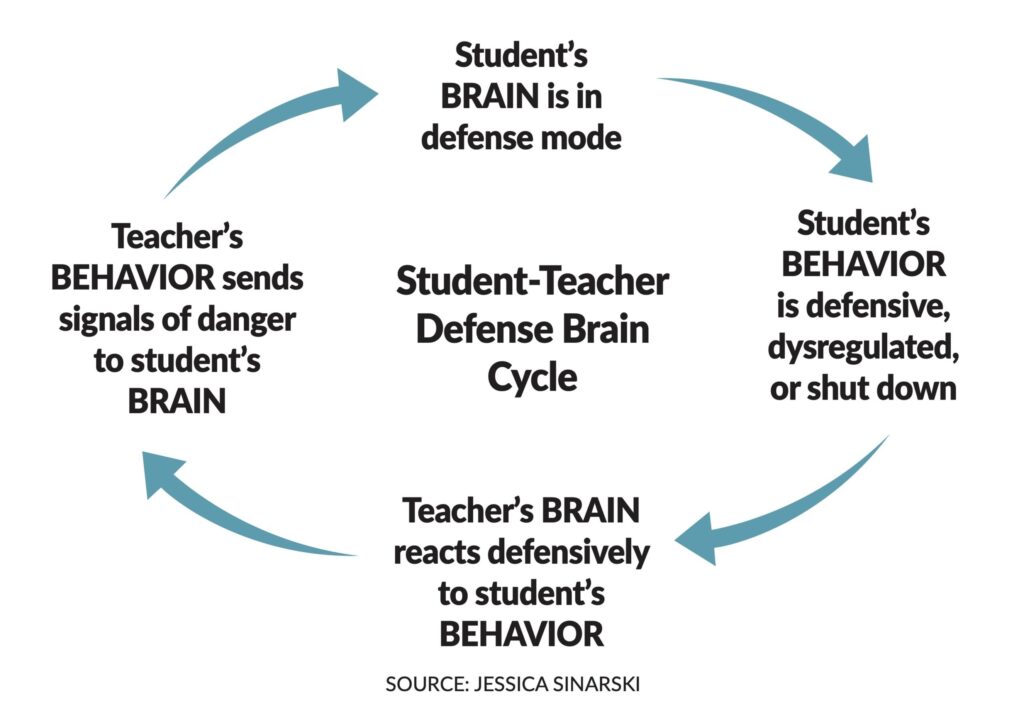Even the ones who REALLY push your buttons!
Relationships are inextricably linked to learning.
Sure, you might say, but what kind of relationship can I have with a student who just seems grumpy all the time? What do I do when a kid seems to be pushing me away? We all know that feeling where you try and try but feel like you get nothing back.
Relationships are meant to be reciprocal, so it actually hurts when we feel that disconnection.
This is particularly challenging as a teacher because, as the old saying goes, Kids don’t care how much you know until they know how much you care. Pretty soon, we don’t care.
It’s a brain thing!
When faced with another brain in protection mode, your brain naturally goes there too. It looks a little something like this:

We will keep going round and round unless we choose to get back in connection mode. Try one of these 6 quick ways to break the cycle. Bonus: They’re easy enough that you can even use them with that student 😉
Break the Defense Brain Cycle with Connection!

Work with a student to pick a personalized greeting like a fun handshake, high five, or fist bump. Safe touch, along with something that’s just for the two of you, increases felt safety and connection.

Spend two minutes per day with that student talking about anything other than school and behavior. You might have to strategically be passing by their locker or walk out to recess next to them. Compliment something they are wearing or ask if they like movies…anything to get the conversation going and then listen without judging. Try to affirm their experience and find some common ground. Do this for 10 days straight and notice if you feel any difference in your connection to the student. Keep it going with two minutes per week.

Find some small moment of joy, play, or laughter together. It could be a video of a cute animal or a little thumb wrestling match. Anything that sparks shared joy will help awaken the neural pathways to connection in both you and your student.

Reading together helps light up similar pathways in the brain for all who are enjoying the story together. This provides a shared topic for conversation and connection. This is part of why I write bright, engaging picture books. Reading together helps build connections, both in the brain, and between child and adult.

Start each day with five sticky notes in your workspace, each with a student’s name. Throughout the day, jot a quick, positive message or observation on each note. At the end of the day, take a picture of your notes and then stick them in the students’ backpack or take-home folder. Repeat with whichever students are pushing your buttons to help you stay curious about what is going well with these students.

For one week, at the end of each day jot down 3-5 things that were positive or neutral. The Downstairs Brain is primed to look for the negative, so this Upstairs Brain activity helps you build a clearer picture. Keep the list on your phone or in your desk so you can remember the good even though your Downstairs Brain wants to take over.
Little moments of connection add up to big changes.
Showing up in these brain-building ways is powerful, but it does take some Upstairs Brain intentionality on the part of the adult.
You are a powerful brain builder.
Thank you for showing up for your students. They need you…even when they act like they don’t.